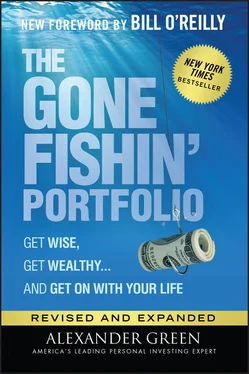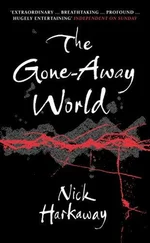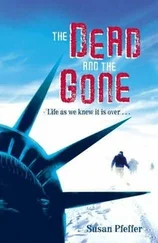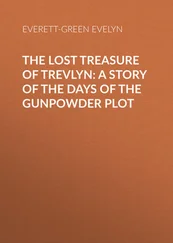Timeless investment advice is an ambitious goal, however. And much has changed since the book's publication in 2008.
We witnessed the housing bust and the biggest financial crisis in nearly a century. Oil prices plunged as new technologies—horizontal drilling and hydraulic fracturing—made formerly inaccessible deposits economically viable. Interest rates dropped all the way to zero—and into negative territory in many countries.
We enjoyed the longest U.S. economic expansion and bull market from 2009 to 2019.
Eleven years of extraordinarily high stock returns were followed by a global pandemic, the greatest spike in unemployment since the Great Depression, the largest economic contraction ever, and the fastest—and shortest—bear market in history, quickly followed by the fastest market rebound and largest quarterly economic expansion in history.
With all these booms and busts, the Gone Fishin’ Portfolio was truly put to the test. And it came through like a champ, delivering solid returns with less risk than being fully invested in stocks, and without a single modification to the original strategy.
This last point is key. The idea behind this investment system is to quit worrying about the economy, inflation, interest rates or the financial markets and instead use a strategy designed to grow your assets in good times and protect them in bad, despite the fact that we cannot know in advance when these expansions and contractions will arrive.
My goal with this book is to show readers the safest, simplest way to achieve and maintain financial independence.
I'm not talking about people with great connections, incredible talents or innate genius. I'm talking about everyday, ordinary people. People like Ronald Read.
Read, a longtime resident of Brattleboro, Vermont, died in 2014 at age 92. He lived modestly, as you might expect for a man who worked 25 years at a gas station and then 17 more as a janitor at a local J.C. Penney. Yet his relatives were shocked when they discovered that he left behind an estate valued at almost $8 million.
Read's story puts the lie to the conventional wisdom that to get rich you have to be well connected, highly educated or a successful entrepreneur with his or her own business. He made his fortune in the stock market, where anyone with even a modest amount of savings can take an ownership stake in many of the world's best businesses. He had no formal training in business or economics. But, as he proved with his own example, that's not necessary for long-term investment success.
How did a janitor and gas station attendant build a net worth that put him in the top 1% of the nation? Read was patient. He thought long term and wasn't buffeted by daily events or the regular caterwauls of market pundits. He didn't mistime the market because he never tried to time it. And he diversified broadly.
(Some investment pros will tell you the key to making a fortune in the stock market is owning a concentrated stock portfolio with just a small number of names. The assumption, of course, is this limited selection will do exceptionally well. But what if it doesn't? What if it does exceptionally poorly instead? A smart investor spreads his bets not only to reduce risk but to increase his chances of holding a lot of big winners. In the pages ahead, I'm going to show you how to own not just a few of the market's biggest gainers in the years to come but every one of them —and not just possibly but definitely. So stay tuned.)
Read kept his investment costs minimal. He didn't use a full-service broker or other high-paid advisor. He used a discounter only to execute his trades. And he lived frugally. Although his stock portfolio hit the multimillion-dollar mark many years before he died, he didn't flaunt his wealth. He was generally seen in the same flannel jacket and baseball cap. His most expensive possession was a 2007 Toyota Yaris valued at $5,000. He foraged for his own firewood and would often park several blocks away to avoid paying parking fees. As a result, he went from being a janitor to a philanthropist.
What did Read do wrong? From an investment standpoint, almost nothing. But from a commonsense standpoint, I question whether it was wise to live a life of such extreme frugality.
(As we'll discuss, that isn't necessary with the Gone Fishin’ strategy. Living like a miser so you can spend your money in retirement is a bit like saving up all your sex for old age. It doesn't make a lot of sense.)
Read could have enjoyed some of the fruits of his success while he was alive, treating himself or someone he loved to something special every once in a while. Then again, that must not have been important to him. (And, after all, it was his money .) Clearly, he enjoyed the challenge of living modestly, something beyond the imagination of most Americans today.
On the other hand, his local library and hospital in Brattleboro are grateful. Read bequeathed them more than $6 million.
Why would I lead off with a story about a janitor and gas station attendant who accumulated a multimillion-dollar fortune? After all, someone like Read must clearly be the exception, not the rule.
Not so. I've met many men and women from humble circumstances who have developed sizable fortunes … and heard about many more. One of my regular golf partners recently told me he had just settled his father's estate.
“The man was a barber. He never made more than $10,000 a year. So I was surprised to find he left a seven-figure estate.” How? By saving regularly and investing in stocks.
Read and my friend's father are typical of the thousands of men and women surveyed by Thomas Stanley and William Danko in The Millionaire Next Door: The Surprising Secrets of America's Wealthy . Stanley, and later his daughter, Sarah Stanley Fallaw (also a researcher), spent decades learning how middle-class workers and other men and women of modest means become rich.
The best part? It has nothing to do with founding a computer company in your garage, recording a platinum-selling album or playing third base for the Yankees. Rather, most people who achieve financial freedom in this country follow a remarkably similar path. They adopt work, spending, saving and investment habits that lead—almost inevitably—to a seven- or eight-figure net worth.
All you need are knowledge, discipline and patience. This book provides the knowledge. And in Chapter 15, I'll also address the factors that will challenge your discipline and patience in the months and years ahead.
The principles of wealth creation are well understood. But that doesn't mean that most people understand them. A few years ago, the Securities and Exchange Commission (SEC) released a wide-ranging report on financial literacy in the United States, and the conclusion was clear: We're not there. We're not even close. Yet the consequences of financial illiteracy have never been greater.
Corporate pension plans have gone the way of the passenger pigeon. And without serious reform, Social Security—according to the agency's own website—will eventually be bankrupted by time and arithmetic.
One health and retirement survey concluded that most Americans “lack even a rudimentary understanding of stock and bond prices, risk diversification, portfolio choice and investment fees.” The most common response to most questions in the survey was “Do not know.”
As a nation, our financial illiteracy is appalling. Even good students graduate from high school without understanding compound interest, IRAs and 401(k)s, or why we even have a stock market. And when it comes to money basics, ignorance gets expensive fast.
Here are just a few highlights from that SEC report.
When asked the primary benefit of portfolio diversification, respondents were given three choices: (a) risk reduction, (b) increased returns or (c) reduced tax liabilities. Only 56% knew the answer was (a). (Even if they had no clue, respondents still had a 33% chance of getting it right.) The reality is that most respondents didn't even know this most basic piece of financial knowledge.
Читать дальше












